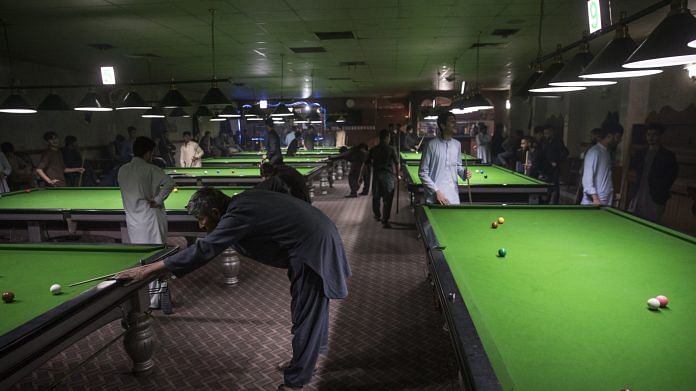Is there really a Taliban 2.0? At the triumphant insurgent group’s first press conference in Kabul, a spokesman promised something akin to sweet reasonableness, in turn prompting something akin to optimism that the militia’s mindset has changed over the past 20 years. Listen! They’re talking about allowing women to work!
But the reassurances of Zabiullah Mujahid about the new, improved Islamic Emirate of Afghanistan should be treated with caution. There is every chance that the Taliban’s spokesman was merely playing to the international gallery. And even if Mujahid is entirely sincere, he represents only one faction of the group.
Although nominally led by a shadowy supreme commander, Hibatullah Akhundzada, the Taliban is not a monolith. Its leadership includes both political figures like Mullah Abdul Ghani Baradar, who has been negotiating with the U.S., and military commanders like Sirajuddin Haqqani and Mohammad Yacoub, who are not quite as conciliatory. (Yacoub is the son of the former supreme leader, Mullah Omar.)
It may be weeks, even months, before we know which faction calls the shots in Kabul. But long before we learn whether the Taliban have changed, its leaders will have discovered that the capital and much of the country have changed. They are dealing with an Afghanistan 2.0.
In 1996, the last time the Taliban took control in Kabul, Afghan society was overwhelmingly insular, impoverished, illiterate and rural. The country is still desperately poor, but other socio-economic indicators capture the dramatic change of the two decades while they were in the wilderness.
The adult literacy rate is 41%, and nearly as many Afghans are employed in the services sector as in agriculture. They are no longer isolated: Television is ubiquitous and cellphones are commonplace, giving people access to the wider world. Inevitably, there has been an evolution in aspirations and attitudes — and not only toward women.
The population, meanwhile, has more than doubled to 40 million, with much of the growth taking place in urban areas. Kabul is now a metropolis of nearly 4.5 million, up from around 2.5 million in 2001. The rate of growth has been even faster in other major cities that the Taliban has recently seized, such as Herat and Mazar-e-Sharif.
The question for the Taliban leadership now is whether their traditional methods, brute force and crude propaganda, can be effective on a larger, more urban and better-informed population. It may not require much coercion to impose the old restrictions — no music, limited education for girls, compulsory burqas for women and beards for men — in the places like Arghistan, a district of Kandahar province that has long been under Taliban control. Imposing the group’s will across the country will require repression of a much higher order.
It is likely that hardliners in the Taliban will want to do just that. Many of the militants remain committed to the old way of using exemplary punishment on a few, such as public floggings and executions, to subdue the wider population. And it is important to remember that the Taliban have some new tools for imposing order, including shiny new American-made military gear, as well as an increasingly sophisticated understanding of the propaganda potential in social media.
But it is also conceivable that some of the Taliban leadership realize the new realities require new methods. The optimists among Afghanistan-watchers believe that the Baradar faction, coached by the government of Qatar, will counsel a certain amount of moderation, along the lines laid down by the spokesman in Kabul. This vision of Taliban 2.0 imagines a state in which authority is shared between an executive branch led by the Baradar faction and a security establishment led by the hardliners, both under the supreme leadership of Akhundzada.
In other words, the Islamic Emirate of Afghanistan would look very much like the Islamic Republic of Iran.
This is ironic given the history of rancor between Tehran and the Taliban: The two sides nearly went to war in 1998. More importantly, it is implausible. Unlike the mullah-military duopoly in Iran, the Taliban has no deep bench of technocrats who can provide even a simulacrum of a modern state. Nor do they have any experience of running a modern economy.
And the people they might have turned to for administrative expertise have little faith in visions of a kinder, gentler Taliban, and are stampeding toward the exits.
More than likely, then, the new Taliban-led government will be a messy, unstable affair, attended by bitter factional rivalries and unpredictable policies. Under the circumstances, it is hard to hold out much hope for Afghanistan 3.0.- Bloomberg
Also read: How Taliban’s takeover of Afghanistan puts China in $282 billion creditor trap






